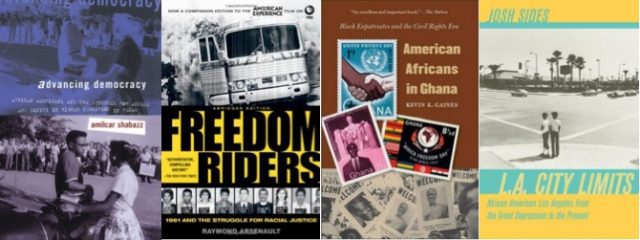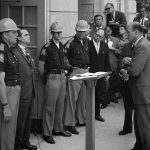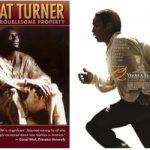During the summer of 2016, we will be bringing together our previously published articles, book reviews, and podcasts on key themes and periods in the history of the USA. Each grouping is designed to correspond to the core areas of the US History Survey Courses taken by undergraduate students at the University of Texas at Austin.
Laurie Green talks about the importance of the Emancipation Proclamation of 1863 to the Civil Rights movement in 1963.
Peniel Joseph explains how Muhammad Ali helped make black power into a global brand.
Steven Hoelscher and Andrea Gustavson discuss the ways photographs captured the Civil Rights in the South during the early 1960s in their article Reading Magnum: Photo Archive Gets a New Life.
Eyal Weinberg and Blake Scott discuss the power of music for teaching civil rights, and other topics in US History.
And finally, Joan Neuberger explores the African American History sources held on the University of Houston’s Digital History website and Charley Binkow discusses African American history sources on ITunes.
Recommended Reading and Films:
Matt Tribbe recommends Freedom Riders: 1961 and the Struggle for Racial Justice, Abridged Edition, by Raymond Arsenault (Oxford University Press, 2011)
Kyle Smith reviews Advancing Democracy: African Americans and the Struggle for Access and Equity in Higher Education in Texas, by Amilcar Shabazz (University of North Carolina Press, 2004)
Cameron McCoy recommends L.A. City Limits: African American Los Angeles from the Great Depression to the Present, by Josh Sides (2003)
Dolph Briscoe IV discusses Baseball’s Great Experiment: Jackie Robinson and His Legacy by Jules Tygiel (Oxford University Press, 1997) and the film on the same topic, 42.
Widening the scope of the Civil Rights movement, Joseph Parrott recommends African Americans in Ghana: Black Expatriates and the Civil Rights Era, by Kevin K. Gaines (2007)
And finally, Daina Ramey Berry, Tiffany Gill, and The Associate of Black Women Historians provide historical context to address widespread stereotyping presented in both the film and novel version of The Help.
Race and Slavery’s Lasting Legacy:
You might also like our compilation of articles, book recommendations, and podcasts on Slavery in the US, including the following:
Jacqueline Jones discusses her book A Dreadful Deceit: The Myth of Race from the Colonial Era to Obama’s America, an exploration of the way that the idea of race has been used and abused in American history. This discussion is expanded further on 15 Minute History: The Myth of Race in America.
Daina Ramey Berry and Jennifer L. Morgan offer historical perspectives on the casual killing of Eric Garner, highlighting slavery’s lasting legacy and the historical value of black life.
Concerned by misconceptions about slavery in public debate, Daina Ramey Berry dispels four common myths about slavery in America.
And here are some more Books on Slavery, Abolition, and Reconstruction recommended by Jacqueline Jones and here is a Jim Crow reading list compiled by Jacqueline Jones and Henry Wiencek.
15 Minute History:
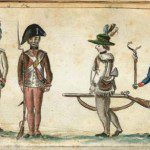 There is no question that the idea of race has been a powerful driving force in American history since colonial times, but what exactly is race? How did it become the basis for the institution of slavery and the uneven power structure that in some ways still exists? How has the idea of what constitutes race changed over time, and how have whites, blacks (and others) adapted and reacted to such fluid definitions?
There is no question that the idea of race has been a powerful driving force in American history since colonial times, but what exactly is race? How did it become the basis for the institution of slavery and the uneven power structure that in some ways still exists? How has the idea of what constitutes race changed over time, and how have whites, blacks (and others) adapted and reacted to such fluid definitions?
Guest Jacqueline Jones, one of the foremost experts on the history of racial history in the United States, helps us understand race and race relations by exposing some of its astonishing paradoxes from the earliest day to Obama’s America.
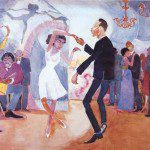 In the early 20th century, an unprecedented cultural and political movement brought African-American culture and history to the forefront of the US. Named the Harlem Renaissance after the borough where it first gained traction, the movement spanned class, gender, and even race to become one of the most important cultural movements of the interwar era.
In the early 20th century, an unprecedented cultural and political movement brought African-American culture and history to the forefront of the US. Named the Harlem Renaissance after the borough where it first gained traction, the movement spanned class, gender, and even race to become one of the most important cultural movements of the interwar era.
Guest Frank Guridy joins us to discuss the multifaceted, multilayered movement that inspired a new generation of African-Americans—and other Americans—and demonstrated the importance of Black culture and its contributions to the West.
White Women of the Harlem Renaissance
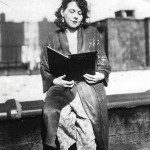 During the explosion of African American cultural and political activity that came to be known as the Harlem Renaissance, a number of white women played significant roles. Their involvement with blacks as authors, patrons, supporters and participants challenged ideas about race and gender and proper behavior for both blacks and whites at the time.
During the explosion of African American cultural and political activity that came to be known as the Harlem Renaissance, a number of white women played significant roles. Their involvement with blacks as authors, patrons, supporters and participants challenged ideas about race and gender and proper behavior for both blacks and whites at the time.
Guest Carla Kaplan, author of Miss Anne in Harlem: White Women of the Harlem Renaissance, joins us to talk about the ways white women crossed both racial and gender lines during this period of black affirmation and political and cultural assertion.
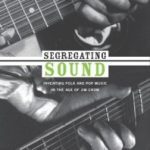 Anyone who’s been to the music store lately (or shopped for digital downloads) is probably familiar with the concept of music categorized not only by genre, but also more subtler categorizations that might make us think of country music as “white” or hip-hop as “black.” It might be surprising that such categorizations were a deliberate mechanism of the music industry and that, even at a time when American society was as racially divided as the late 19th century, such distinctions were usually neither considered nor proscribed onto genres of music.
Anyone who’s been to the music store lately (or shopped for digital downloads) is probably familiar with the concept of music categorized not only by genre, but also more subtler categorizations that might make us think of country music as “white” or hip-hop as “black.” It might be surprising that such categorizations were a deliberate mechanism of the music industry and that, even at a time when American society was as racially divided as the late 19th century, such distinctions were usually neither considered nor proscribed onto genres of music.
Guest Karl Hagstrom Miller has spent a career using popular music to explore the economic, social, legal, and political history of the United States. In this episode, he helps us understand how popular music came to be segregated as artists negotiated the restrictions known as the “Jim Crow” laws.

